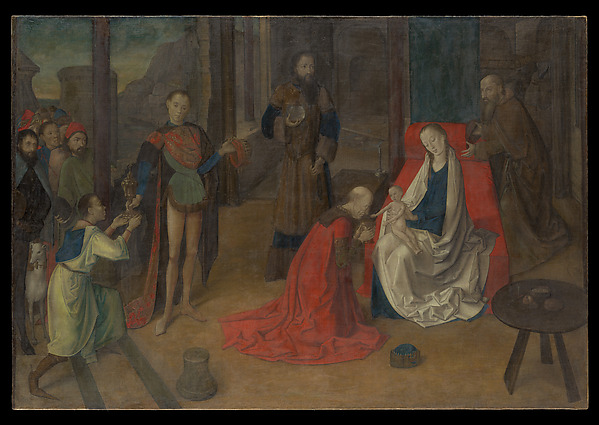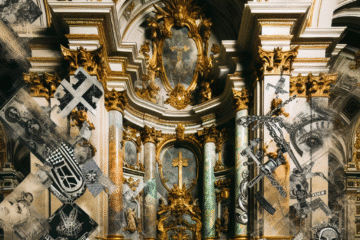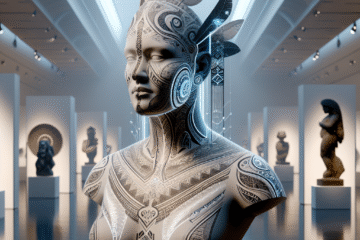
Image title: The Adoration of the Magi
Medium: Distemper on canvas
Date: 1472–74
Source:
The Met Collection
“
All love that has not friendship for its base, is like a mansion built upon the sand.
”
— Ella Wheeler Wilcox
Built by Brushstroke: Architectural Fantasies from Paintings That Could House Us
Introduction: A Creative Foundation
What if you could live inside a painting? Not just hang it on the wall, but inhabit its ornate corridors, wander its Escher-like stairs, or sleep under its swirling, Surrealist ceilings? The painted world has long offered more than visual delight—it has presented shelters for the psyche. In works ranging from the labyrinthine prisons of Giovanni Battista Piranesi to the melting facades of Salvador Dalí, artists have constructed imaginary architectures not bound by physics or blueprints. These dreamscapes illustrate how brushstrokes can build spaces as complex and revealing as any built structure, giving shape to inner landscapes through impossible buildings.
This exploration begins by tracing how artists across centuries have used architecture not just to show space, but to express thought, anxiety, and the ever-shifting sense of what it means to be ‘at home.’
1. The Classical Echo Chamber: Illusion and Order in Renaissance Dreams
During the Renaissance, architecture in painting evolved from background decor to stage-setting for philosophical ideals. Artists like Leonardo da Vinci and Raphael painted grand domes, pillared arcades, and mathematically perfect perspectives that echoed the rebirth of classical architecture. These spaces did more than depict actual buildings—they revealed the humanist ideals of clarity, balance, and rational beauty. In ‘The School of Athens’, Raphael constructs vast imaginary halls to host a symposium of classical thinkers; it’s architecture as metaphor for harmonious intellectual space.
This period saw a convergence of art, architecture, and science. With innovations like linear perspective (pioneered by Brunelleschi and Alberti), painted space could now be structured with the precision of engineering—and imbued with philosophical gravity. Architecture became a visual vehicle to represent not only place but a mental order humans aspired to inhabit.
2. Piranesi’s Carceri: Labyrinths of the Mind
Fast forward to the 18th century, and we find a radical shift in the way architectural fantasy was used in art. Giovanni Battista Piranesi, an Italian printmaker and architect, produced a series of etchings titled ‘Carceri d’Invenzione’ (Imaginary Prisons). These visionary structures, though entirely fictitious, explore psychological confinement far more than any real-world penitentiary ever could. Stairways spiral endlessly, arches dissolve into murky shadows, and catwalks lead nowhere.
Piranesi’s prisons symbolize the growing 18th-century disillusionment with Enlightenment rationalism. They stand as disorienting stage sets of anxiety, representing mental states rather than physical spaces. Here, we see a move toward architectural expressionism—a way to embody existential tension instead of empirical logic. The emergence of Romanticism would catch fire here, as artists turned inward to explore the sublime and the terrifying.
3. Dalí’s Surrealist Structures: Architecture as Dreamscape
By the 20th century, the Surrealists took the idea of psychological architecture to wild new territory. Salvador Dalí, with his melting clocks and liquified buildings, transformed the laws of structure into dripping metaphors for the unconscious. In paintings like ‘The Persistence of Memory’ and ‘The Disintegration of the Persistence of Memory’, buildings ooze into landscapes like hallucinations, suggesting that the mind’s idea of space is fluid, fickle, and deeply irrational.
Surrealist architecture isn’t about containment—it’s about dissolution. Inspired by Freud’s theories of dream analysis and subconscious desire, artists now built shelters not for the body, but for dream logic. The architectural form no longer required physical coherence—just emotional resonance. In Dalí’s spaces, walls don’t protect; they melt. Rooms do not contain; they sprawl across memoryscapes governed by fantasy.
4. Pop and Postmodernism: Irony in the Imagined City
After the rigid angularity of mid-century modernism, the latter half of the 20th century saw a playful return to fantastical structures—only now laced with irony. In the works of artists like David Hockney or James Wines, architectural elements become colorful, diagrammatic, or deliberately absurd. Postmodern architecture embraced exaggeration and contradiction, a tendency also found on the painted canvas.
Hockney’s poolside paradises, with their flat perspectives and candy-colored geometry, reimagine suburban space as a kind of psychological balm. James Wines, through his conceptual group SITE, blurred art and building entirely—designing real retail spaces that mimicked crumbling ruins or tilted facades. The idea was to challenge the expectation of coherence and stability in our built environment. Why shouldn’t a structure be a wink? A dream? A double-take?
5. Digital Fantasies: Algorithmic Architecture in Today’s Art
Contemporary artists working with digital tools have taken architectural imagination into immersive territory. Using AI, VR, and generative design, today’s painters—and their digital descendants—generate speculative habitats that glitch, morph, and evolve in real-time. Artists like Refik Anadol or Krista Kim create data-driven environments that feel more like neural spaces than structural ones.
These visualizations respond to our era’s disorientation—climate anxiety, digital overload, shifting identities. In tandem, concept artists for video games and film (like those behind “Inception” or “Blade Runner 2049”) flesh out impossible cities into nearly plausible architecture. These visual realms evoke both awe and alienation—picturing no longer just the home, but the codebase-as-cathedral in the era of megastructures and the Metaverse.
Conclusion: Painting the Houses of the Mind
Architecture in painting has always been more than decorative or realistic—it’s a framework for how humans structure thought, identity, and emotional experience. Across centuries, artists have drafted homes not for the body, but for the stories and states of mind we carry inside. From the rational balance of Renaissance halls to the dissolving dreamscapes of Dalí, each painted structure reveals as much about a culture’s psyche as its skyline ever could.
We may never live in these impossible buildings. But through the brushstroke, we come close to inhabiting something even more intimate: the architecture of our own psychological depths.

Image description:
File:KMS 4864 Ubekendt – Decorative Painting with Imaginary Architecture – KMS4864 – Statens Museum for Kunst.jpg
License:
Public domain
Source:
Wikimedia Commons
Useful links:


